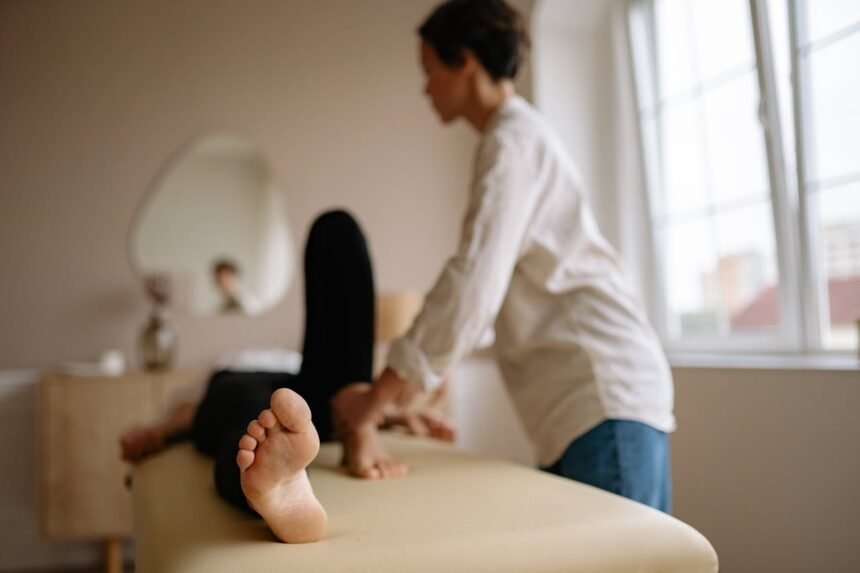Energy medicine is an intriguing field within the broader spectrum of complementary and alternative medicine (CAM) that focuses on enhancing the body’s subtle energy systems to promote healing and well-being. Drawing from ancient traditions and modern innovations, energy medicine integrates various technique,s including acupuncture, Reiki, and biofield therapies that are gaining increased interest and usage in the UK and worldwide.
Understanding Energy Medicine
Energy medicine is based on the premise that the human body operates with various forms of vital energy or life force that flow through invisible channels or fields. These include:
- Qi or Chi: Traditional Chinese medicine conceptualises qi as the vital energy circulating through meridians.
- Prana: In Ayurveda, prana refers to the life force moving through energy channels called nadis.
- Biofield: Contemporary science refers to the measurable electromagnetic fields surrounding the body.
When these energy flows are balanced, the body maintains health. Blockages, imbalances, or disruptions in energy flow are believed to contribute to illness or discomfort.
Common Energy Medicine Modalities
Acupuncture
Acupuncture, rooted in Traditional Chinese Medicine (TCM), involves inserting thin needles at specific points along the meridians. It aims to restore the flow of qi, relieve pain, and promote healing.
The British Acupuncture Council regulates practitioners in the UK and notes acupuncture’s effectiveness in managing chronic pain, migraines, and stress-related conditions. The National Institute for Health and Care Excellence (NICE) recognises acupuncture as a treatment option for conditions like osteoarthritis.
Reiki
Reiki is a Japanese technique where practitioners use gentle hand placements to channel universal energy to the recipient. It promotes relaxation, reduces anxiety, and encourages healing.
While scientific validation is limited, the Complementary and Natural Healthcare Council (CNHC) lists Reiki among recognised therapies and emphasises its safety profile.
Biofield Therapies
These include practices such as Healing Touch, Therapeutic Touch, and Qigong, focusing on manipulating the energy fields surrounding and within the body. They aim to harmonise the biofield to support physical, emotional, and spiritual health.
Scientific Perspectives and Research
Energy medicine often faces scepticism due to the elusive nature of bioenergetics and the challenge of measuring subtle energies. However, modern research disciplines like biophysics and psychoneuroimmunology explore mechanisms potentially underlying these practices.
Controlled trials indicate acupuncture can modulate neural pathways and stimulate endorphin release, providing pain relief. A systematic review in The BMJ acknowledges acupuncture’s role in treating back pain and migraine.
Similarly, studies on Reiki and biofield therapies report improvements in quality of life, stress reduction, and well-being in clinical and palliative care settings, though larger rigorous trials are needed.

Integration with Conventional Medicine
Many UK healthcare providers embrace integrative medicine, combining evidence-supported energy practices with conventional treatments. Hospitals and clinics offer acupuncture and relaxation therapies to complement surgery and chronic disease management.
The NHS supports patient choice for CAM therapies, providing insured practitioners meet professional standards. Informed approaches recognise energy medicine as part of holistic patient-centred care.
Practical Considerations for Energy Medicine
- Practitioner Credentials: Seek registered practitioners with certification through the British Acupuncture Council or CNHC to ensure safety and professionalism.
- Complement, Not Replace: Energy therapies should complement conventional medical advice, not substitute it.
- Individual Response: Benefits vary; patients should maintain open communication with healthcare providers regarding treatment progress.
- Safety: Energy medicine has low risk when performed by trained professionals, especially compared to some pharmaceutical interventions.
UK-Based Resources and Backlinks
- British Acupuncture Council: https://www.acupuncture.org.uk/
- Complementary and Natural Healthcare Council: https://www.cnhc.org.uk/
- National Institute for Health and Care Excellence (NICE): https://www.nice.org.uk/
- NHS CAM information: https://www.nhs.uk/conditions/complementary-and-alternative-medicine/
Conclusion
Energy medicine offers promising, non-invasive approaches to health that integrate body, mind, and spirit. While scientific understanding continues to evolve, many individuals find value in these therapies for pain relief, stress management, and enhanced wellbeing. Supported by professional bodies within the UK and integrated into healthcare settings, energy medicine represents a complementary avenue toward holistic health.
Embracing energy medicine responsibly, with qualified practitioners and alongside standard treatments, can contribute to a balanced, comprehensive wellness strategy tailored to individual needs.
Would you like me to proceed with creating the next article: “Nutritional Psychiatry: How Food Affects Your Mood”?






